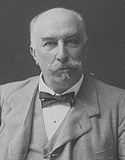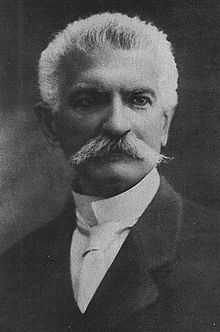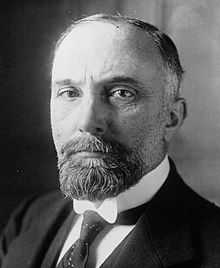Italian general election, 1909
Italian general election, 1909
_crowned.svg.png)
|
|
|
|
|

|
| Composition of the Parliament |
|
General elections were held in Italy on 7 March 1909, with a second round of voting on 14 March.[1] The "ministerial" left-wing bloc remained the largest in Parliament, winning 329 of the 508 seats.[2]
Electoral system
The election was held using 508 single-member constituencies. However, prior to the election the electoral law was amended so that candidates needed only an absolute majority of votes to win their constituency, abolishing the second requirement of receiving the votes of at least one-sixth of registered voters.[3]
Historical background
The right-wing leader Sidney Sonnino succeed to Giolitti's protegé Alessandro Fortis as Prime Minister on 1906. But his cabinet had a short lift; anyway Sonnino formed an alliance with France on the colonial espansion in North Africa. His government lasted only few months.
After Sonnino's resignation Giovanni Giolitti returned to power in 1906. Many critics accused Giolitti of manipulating the elections, piling up majorities with the restricted suffrage at the time, using the prefects just as his contenders. However, he did refine the practice in the elections of 1904 and 1909 that gave the liberals secure majorities.
In the election, The Right lost his important position in the Parliament, repleaced by the Radical Party of Francesco Saverio Nitti, who became an ally of Giolitti and the Italian Socialist Party of Filippo Turati, which continued its strong opposition to the Left governments.
Parties and leaders
Results
| Party |
Votes |
% |
Seats |
+/– |
|---|
|
Historical Left | 995,290 | 54.4 | 329 | –10 |
|
Italian Socialist Party | 347,615 | 19.0 | 41 | +12 |
|
Radical Party | 181,242 | 9.9 | 48 | +11 |
|
Historical Right | 108,029 | 5.9 | 44 | –32 |
|
Italian Republican Party | 81,461 | 4.4 | 23 | –1 |
|
Catholic Electoral Union | 73,015 | 4.0 | 18 | +15 |
|
Constitutional Independent | 41,213 | 2.2 | 0 | New |
|
Vacant | – | – | 5 | – |
| Invalid/blank votes | 61,500 | – | – | – |
| Total | 1,903,687 | 100 | 508 | 0 |
| Registered voters/turnout | 2,930,473 | 65.0 | – | – |
| Source: Nohlen & Stöver |
References
- ↑ Nohlen, D & Stöver, P (2010) Elections in Europe: A data handbook, p1047 ISBN 978-3-8329-5609-7
- ↑ Nohlen & Stöver, p1083
- ↑ Nohlen & Stöver, p1039






